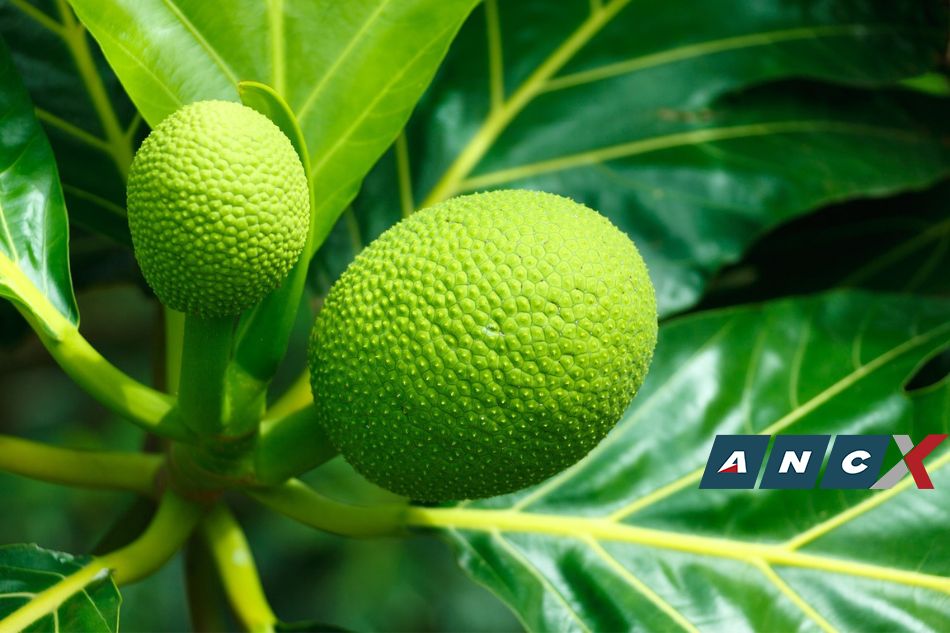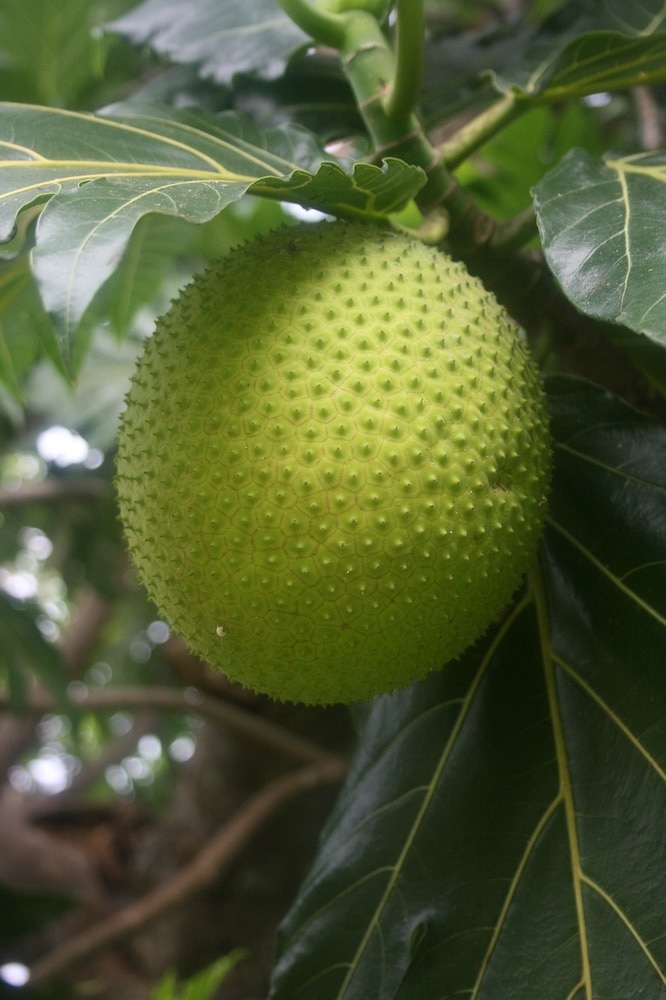[For the 5th consecutive year, ANCX is publishing the winners of the annual Doreen Gamboa Fernandez Food Writing Award. On this its 20th year, the theme revolves around “Roots, Fruits and Vegetables.” The original title of this 3rd prize winner is “The Breadfruit: A Superfruit and So Much More.”]
It’s Saturday morning and I make my trip to the fruit and vegetable market at Bangga Daan in Victorias City. This is where vendors from the northern part of Negros island bring their produce to sell during weekends.
Along with other vendors, Ining, my sukî from Toboso, promised me a week ago that she would bring me kolo today, and she did. Of the half sack of kolo that she brought to sell, I bought two. At P20 each, a special price for her loyal customer, the two pieces of kolo made my eco bag heavier by a few kilos that morning.
When I was kid, I remember my lola treating the family to a sweet delicacy made from kolo. Round-shaped and called breadfruit in English, kolo originated from the islands in the South Pacific and its seeds must have reached the Philippine archipelago through the traders and colonizers of the past centuries. In other parts of the Philippines, it is called rimas.
According to TIME magazine, breadfruit is a superfood, meaning it is packed with vitamins and nutrients that are good for one’s health. The ones I bought from Ining were almost the size of a football. And beneath its yellow-green skin full of prickles, it looks like a plain white bread that’s bland to the taste. It is, however, loaded with calcium, fiber, phosphorus, copper, potassium, and other nutrients.
The reason I asked Ining to bring me kolo was a memory from childhood that made me think of breadfruit—cooked, sweetened and yummy. My grandmother, who had long passed, introduced me to breadfruit as a dessert, and I wanted to relish that memory again through my palate.
The recipe for sweetened kolo is simple: it is skinned and the good parts are cut into bite sizes, washed and soaked in water for a few minutes, moved into a pan, bathed in coconut milk and brown sugar, and carefully stirred with a few drops of vanilla until it dries up and softens. Compared to more complicated recipes that churn out less nutritional desserts, this one is easy to do, requires cheap ingredients, but promises a lot of enjoyment and health benefits.
My cooked kolo, now golden brown, and sticky and creamy from the coconut milk, is warm and ready to eat. I transfer a few chunks into a plate, fork one and take a bite. Its texture is pulpy with the sweet syrup now filling my mouth along with the dancing grains of brown sugar. As the delicacy’s fragrance fills the air, my memories of the days when my grandmother used to prepare this dish return.
The breadfruit, grown and harvested from the northern mountains of the Negros island, found its way into my lola’s old kitchen and was transformed into a beloved delicacy whose aroma, texture, and sweetness helped me celebrate my beloved grandmother.
According to the Department of Agriculture, kolo, or rimas, can be cultivated as “a staple crop which can help alleviate poverty and malnutrition.” Breadfruit can also be an alternative to rice. But compared to rice, breadfruit has a moderate glycemic index, which means it is good for diabetics if cooked and eaten plain. It is so versatile that it can be used to make pastillas, chips, crackers, and even ice cream.
In the Hawaiian culture, a breadfruit tree, symbolic of life, is planted and gifted to a newborn. Well, my lola never gifted me a breadfruit tree but through its fruit, she showed me her unconditional love and affection like all our grandparents did when we were young. Although our grandparents may no longer be around to once again make us enjoy their homegrown recipes, we can always revisit those fun memories through the dishes they once prepared for us.
The recipe that transforms a raw breadfruit into a sweet delicacy is very simple, and there are a lot of dishes from our childhood that are easy to prepare. When these dishes are once again enjoyed, they become conversations with our past, celebrating the people whose hands used to prepare them for us.
As I finish the last chunks of the sweetened kolo on my plate, each bite brings back memories of my childhood with my lola. And with these mouthfuls of kolo, I also benefit from all its nutrients. If I enjoyed a cupful, my potassium intake is equivalent to eating three bananas.
Breadfruit has other names: ukwa, ulu, panapén or p
[Alfonso Delgado is based in Victorias City, Negros Occidental. He is a CPA with accounting and assurance experience in the Philippines and South Korea. He is also a blogger and contributes to Korea.net, the Culture and Information Service of Korea.]



